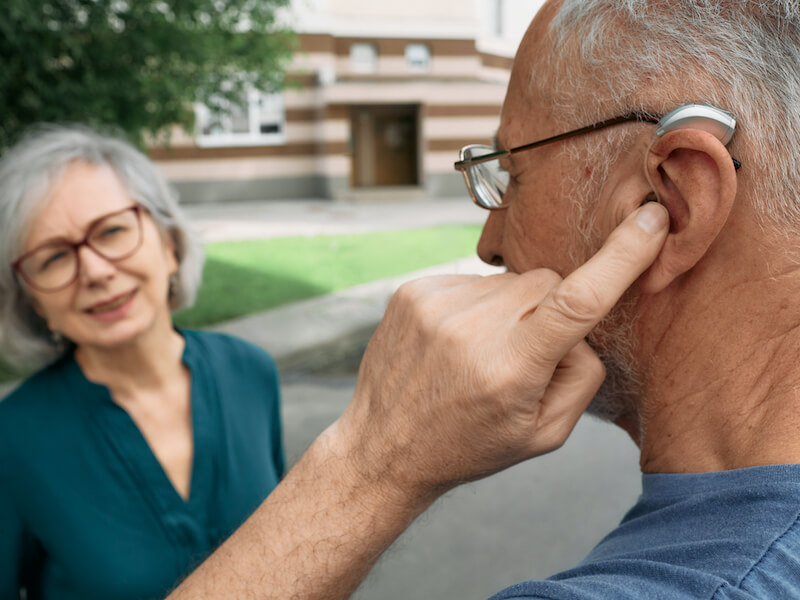
Have you ever had your internet cut right as you’re almost to the best part of your favorite Netflix movie? Instead of discovering who won the baking show, you have to watch an endless spinning circle. And so you just wait. Maybe it’s your modem, might be your router, possibly it’s the internet provider, or maybe it’ll just fix itself. It kind of stinks.
When technology malfunctions, it can be very frustrating. The same is certainly true of your hearing aids. Most of the time, your hearing aids will give you the means to remain connected to loved ones, have conversations with co-workers, and keep up with your neighbors.
But when they stop working, your hearing loss symptoms can suddenly become a lot more frustrating. The technology you’re counting on has failed you. How do hearing aids just quit working? So how do you deal with that? Here are the three common ways your hearing aids can malfunction and how to diagnose and identify them.
Three common issues with hearing aids (and some possible solutions)
Hearing aids are sophisticated devices. Even still, there are some common problems that individuals with hearing aids may experience. Here’s what might be causing those issues (and what you can do to correct them).
Feedback and whistling
Maybe you suddenly begin to hear an awful high-pitched whistling while you’re attempting to have a conversation with a friend or relative. Or maybe you hear some feedback. You begin to think, “this is strange, what’s up with this whistling”?
Here are three possible issues that could be causing this whistling and feedback:
- The functionality of your hearing aid can be affected by earwax accumulation in your ear canal. This is a fairly common one. That includes making your hearing aid whistle or feedback. If possible, you can attempt to clean some earwax out of your ear or consult with us about the best way to do that (don’t use a cotton swab).
- You might not have your hearing aids correctly positioned in your ears. Try to take them out and re-seat them. If the fit isn’t right you might need to come in so we can help you get a better fit.
- For individuals who use behind-the-ear hearing aids, the tubing that connects your earmold with your hearing aid might have become compromised. Try to examine this tubing as closely as you can and make certain nothing is loose and the tube does not appear damaged.
If these problems are not easily resolvable, it’s worth talking to us about correcting the fit or sending your device in for maintenance (depending on what we think the root cause of that whistling or feedback might be).
No sound coming from your hearing aids
Your hearing aids should make, well, sound. That’s their principal function! Something has undoubtedly gone wrong if you can’t hear any sound coming out of your hearing aid. So what could cause hearing aids to lose all sound? Here are several things to watch for:
- Earwax buildup: Here we go again with the earwax! Have a close look to see if you discover any earwax on the microphone or speakers. You want to make certain the device is good and clean.
- Your settings: Scroll through the personalized settings if your device has them. It’s possible your hearing devices are not on the right custom program (so perhaps your hearing aids think you’re in a gymnasium instead of around the kitchen table). The sound you’re hearing could be off as a consequence.
- Power: Everyone forgets to turn their hearing aids on once in a while. Make sure that isn’t the problem. Then you can eliminate that as possible problems.
- Batteries: Be sure your batteries are fully charged. And whether your batteries are rechargeable or not, it might be worth swapping them out for new ones.
We’re here for you if these measures don’t clear up your issues. We’ll be able to help you determine the next steps, and whether maintenance, repair, or replacement is required.
When you have your hearing aids in, you feel pain in your ears
What if your hearing aids are working fine, but every time you put them in your ears, your ears begin hurting? And you’re most likely wondering why your hearing aids would make your ears hurt. This sort of discomfort isn’t exactly conducive to using your hearing aids over the long term. So, why do they ache?
- Fit: The fit of the device is the most evident problem. Needless to say, when the fit is nice and snug, your hearing aids will work best. Which means that there can occasionally be discomfort involved in a poor fit. Some models of hearing aid can be fit to the particular shape of your ears. Over the long run, you will have fewer issues if you have a tight fit. If you come in for a consultation, we can help you achieve the best fit for your device.
- Time: Usually, it just takes some time to get accustomed to your hearing aids. Each individual will have a different adjustment period. It’s worth talking about when you purchase your hearing aids so you have a reasonable concept of how long it might take you to become comfortable with your devices. Also, speak with us about any discomfort you may be experiencing.
Take your new hearing aid out for a test ride
Before you decide on a pair of hearing aids, it’s a good idea to try them out for a while. Most of the time we will have loaner pairs for you to try out before you make a decision.
Selecting the correct hearing aids, adjusting them to fit your requirements, and helping with any ongoing problems you might have, are all things we will help with. We will be your resource for any help you need.
And that’s probably more dependable than your internet company.